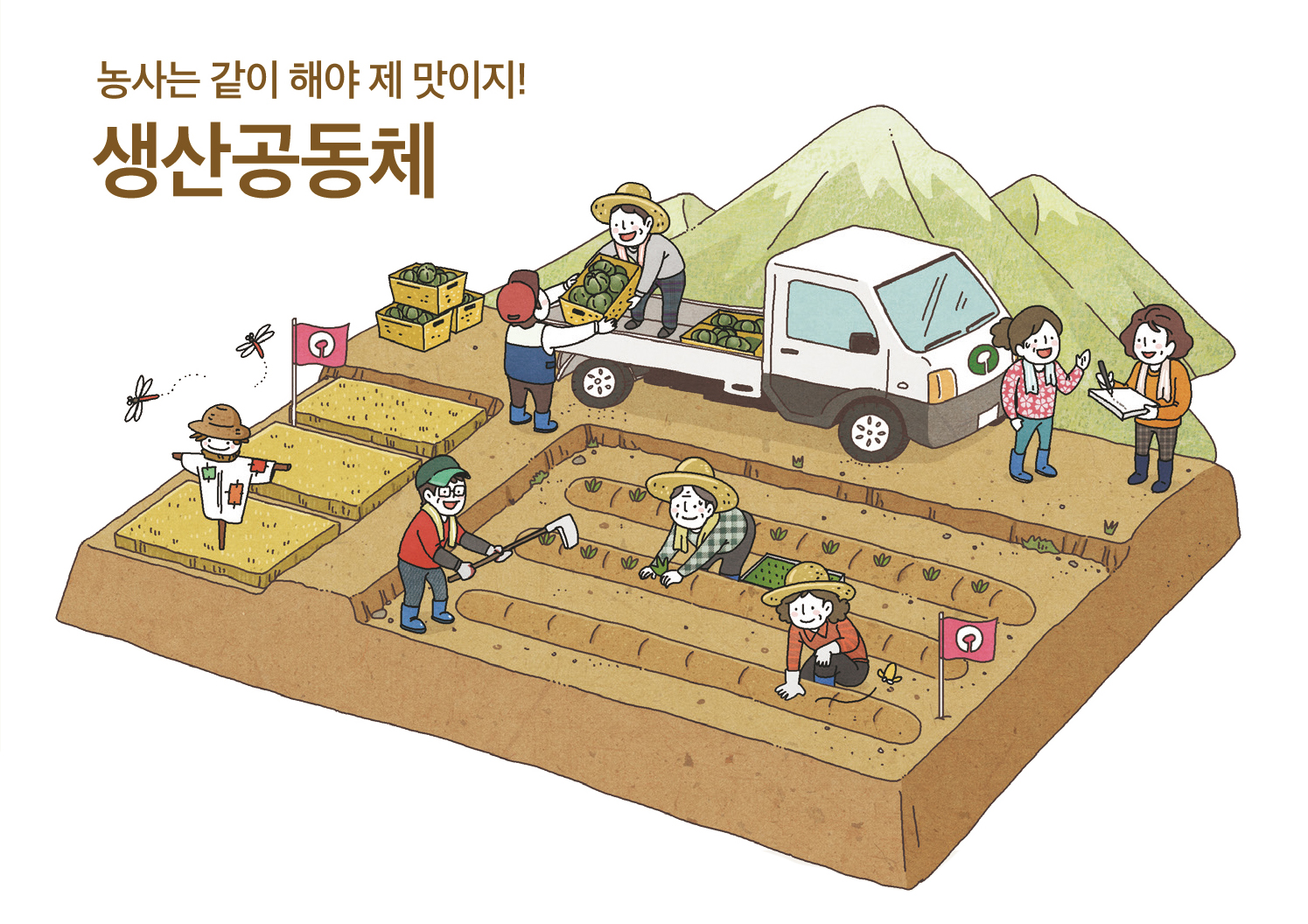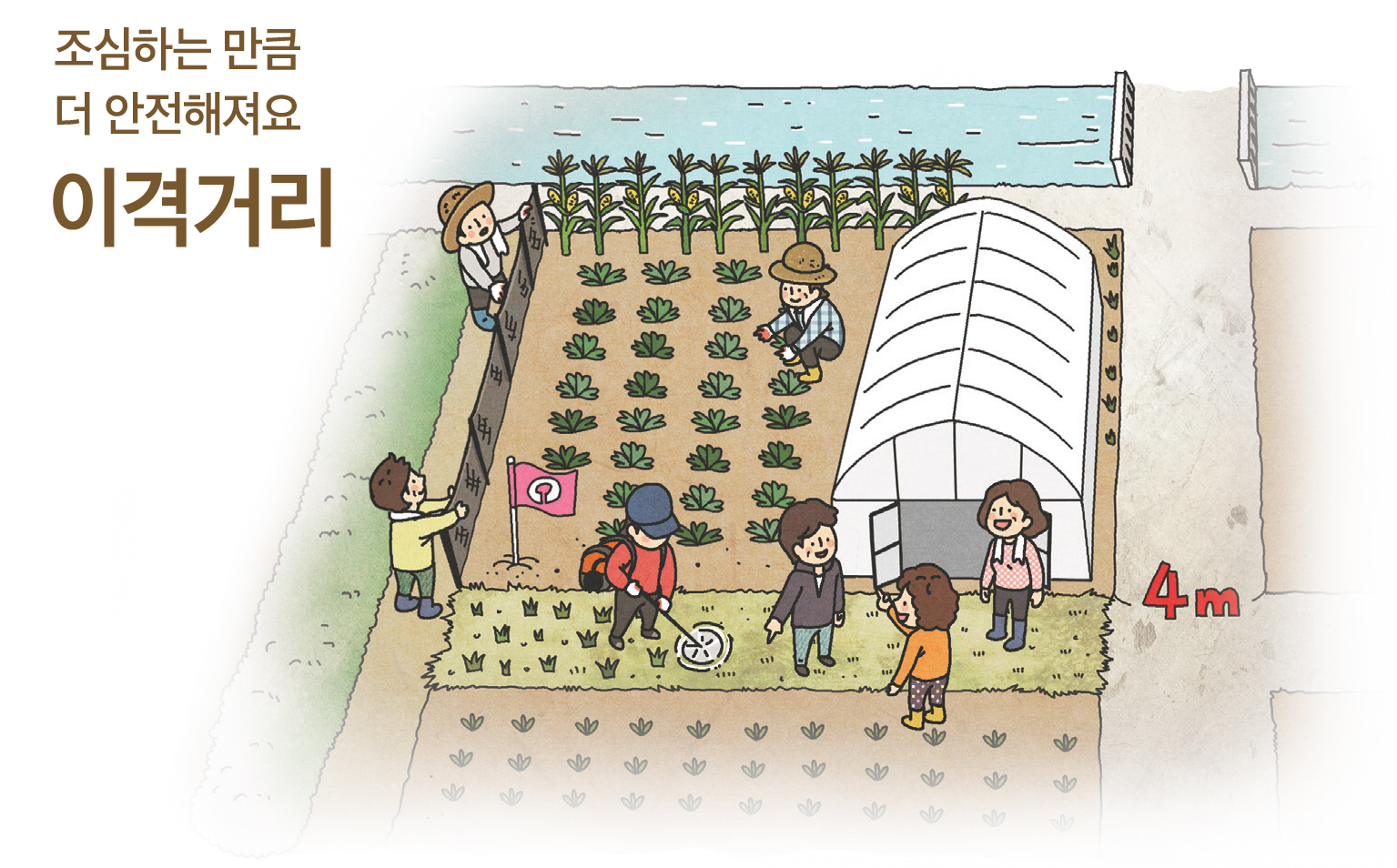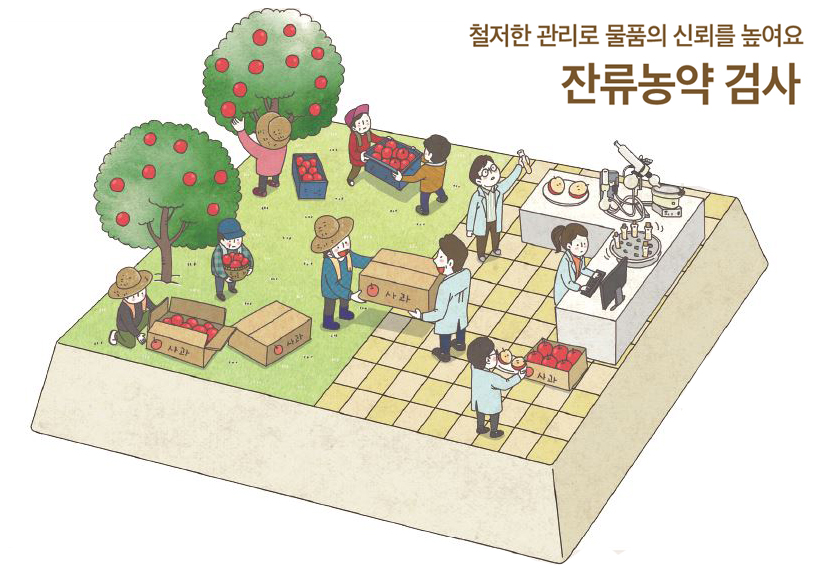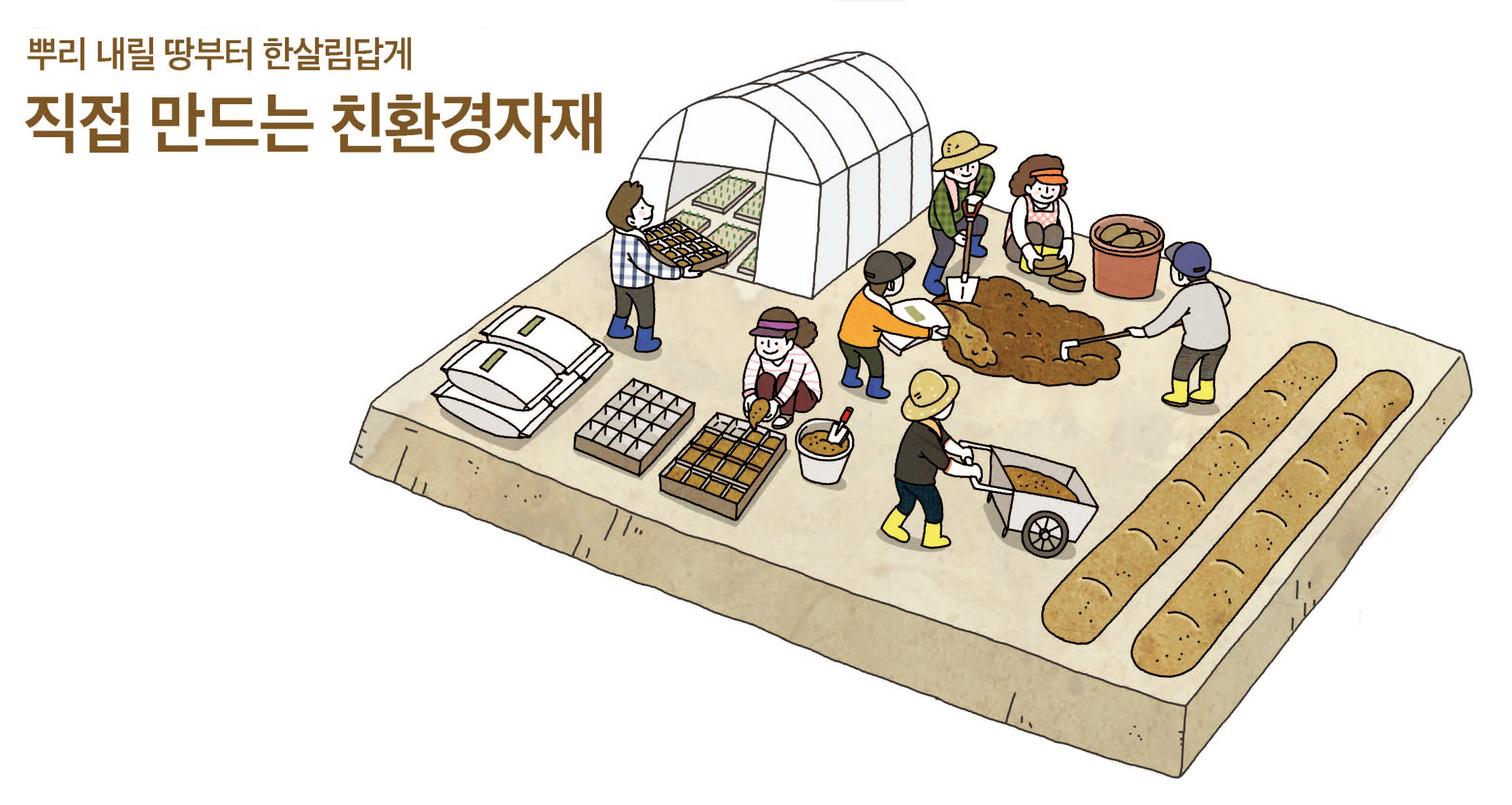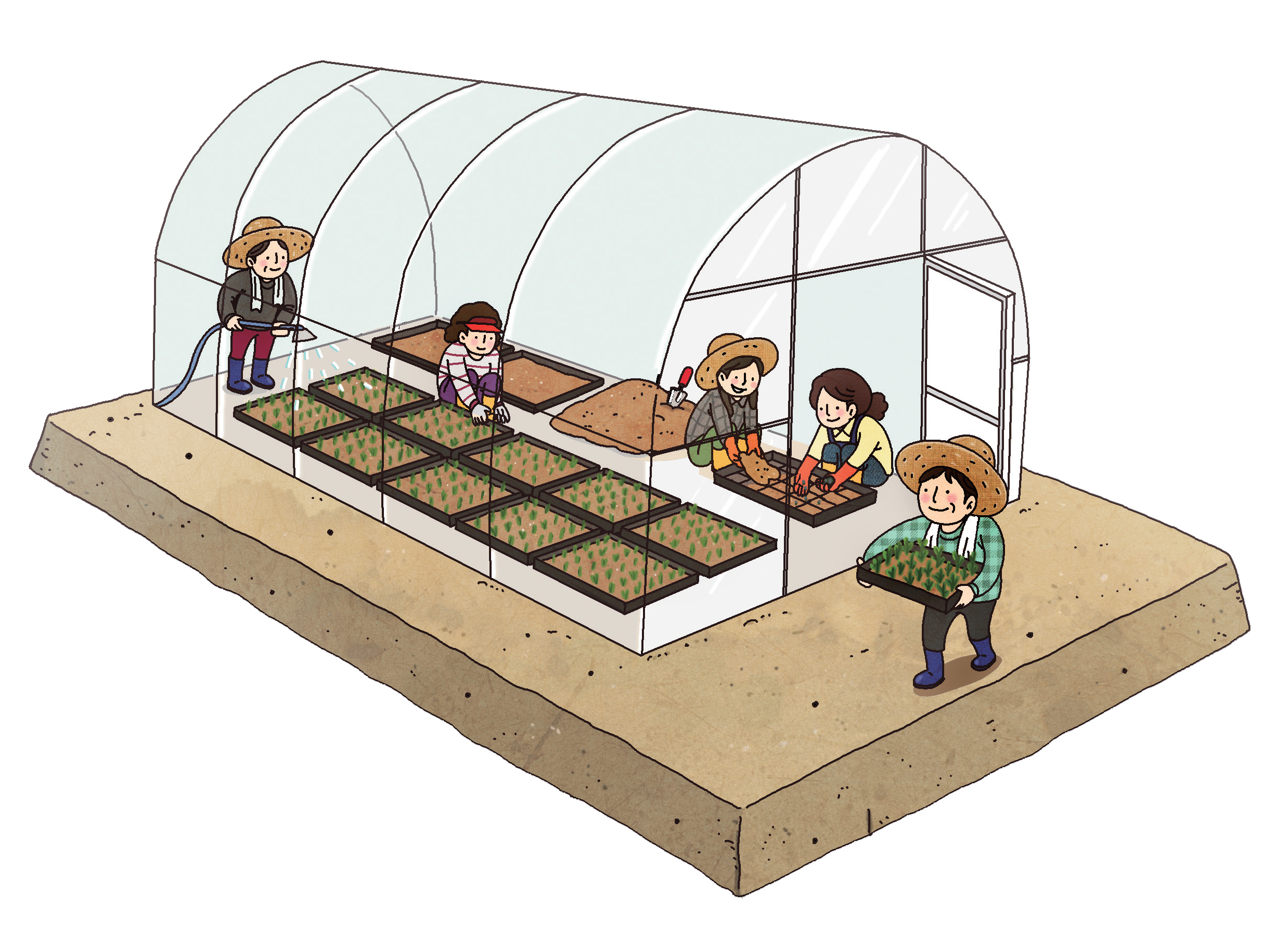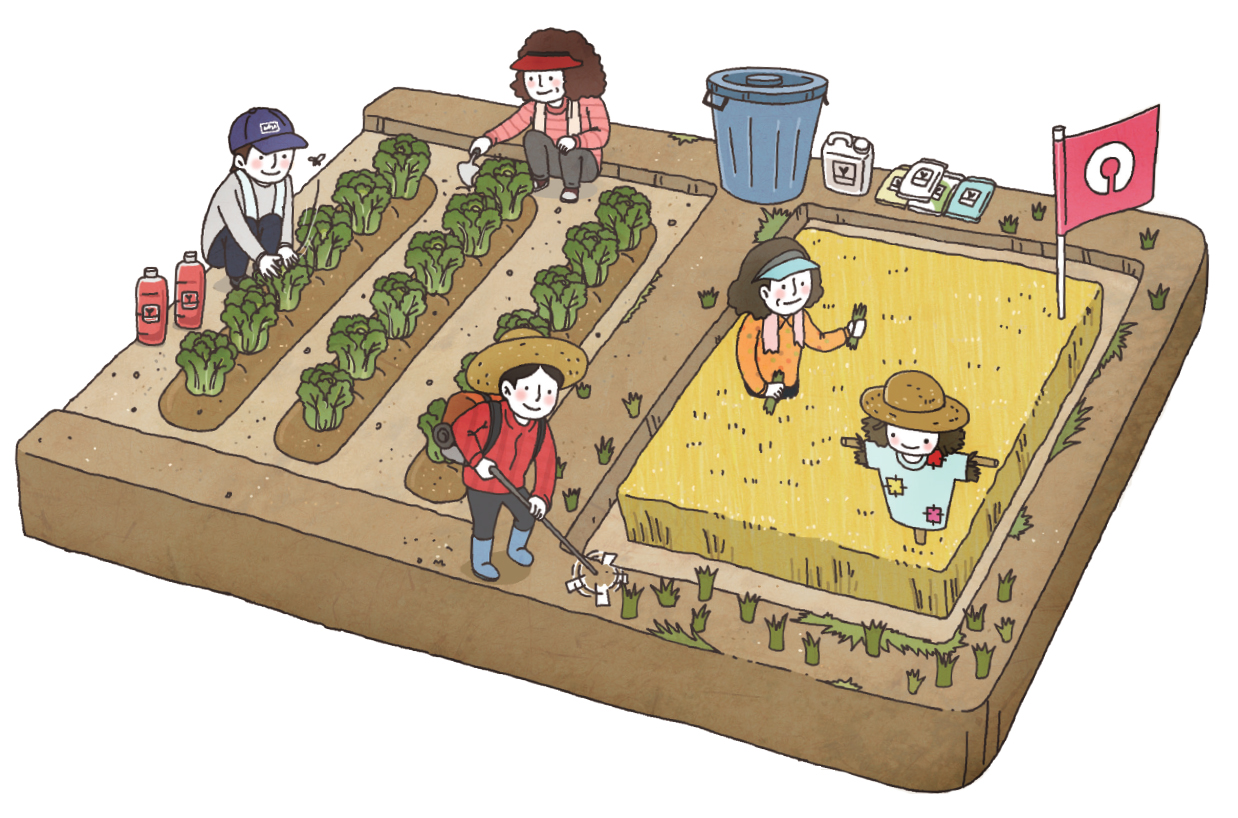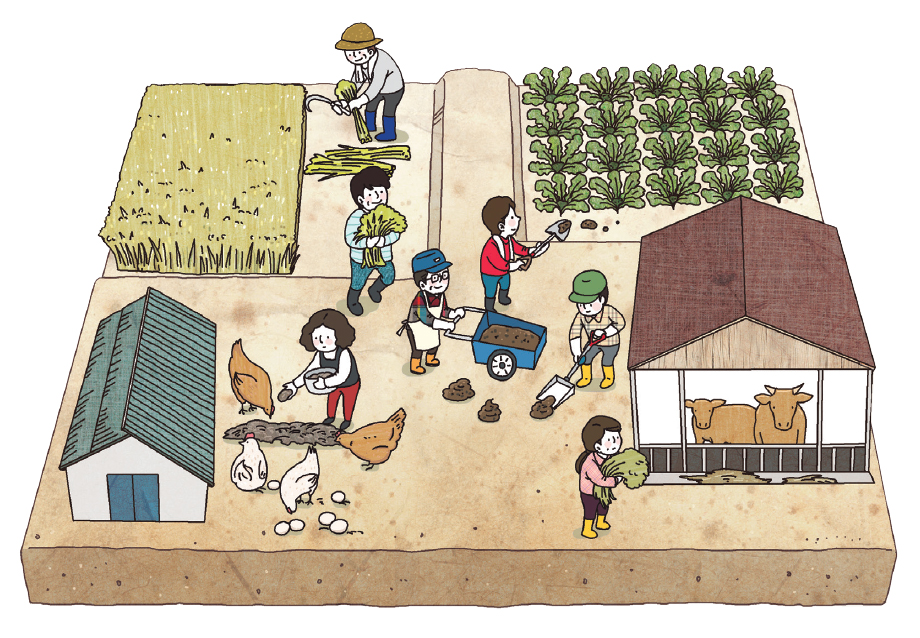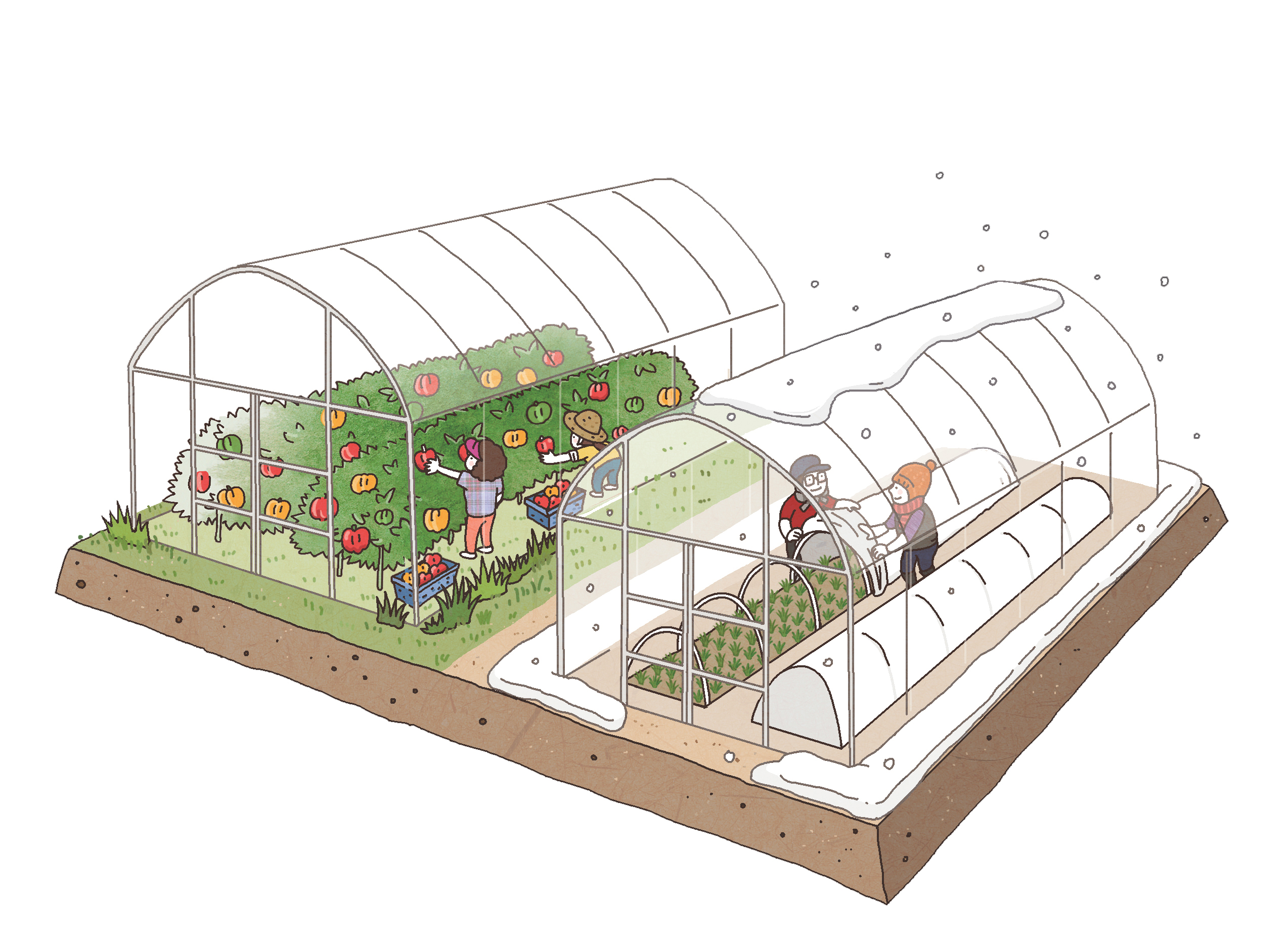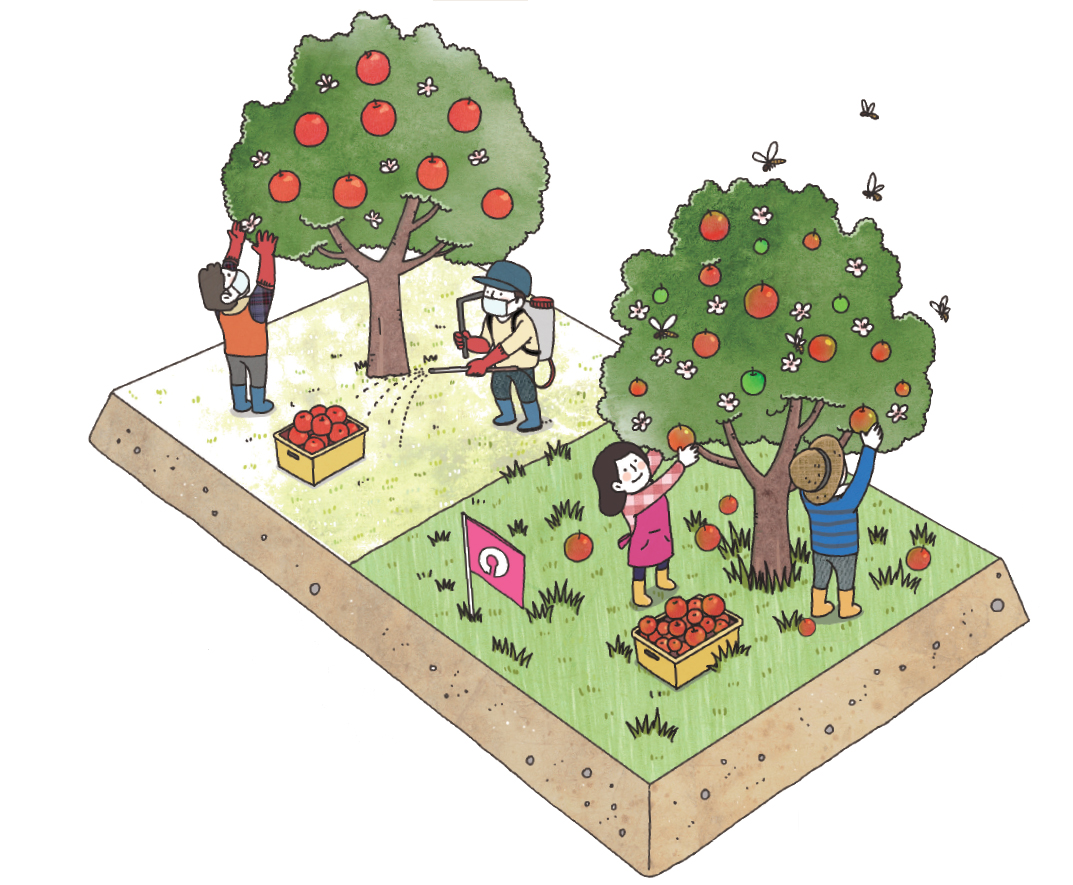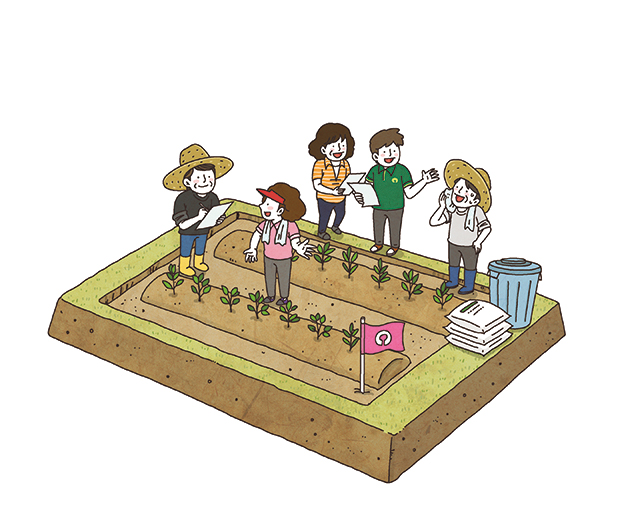Appendix A — Hansalim Farming is Different
This article is a translation of a series of blog posts in Korean published by Hansalim in 2018. Visit https://blog.naver.com/hansalim/221389445450 to see the originals.
Author: Hansalim.
Translation: Jonathan Dolley (with help from DeepL).
A.1 Production Community
Source: https://blog.naver.com/hansalim/221389445450
Hansalim farming is done in community-based production communities, not just because we need labour. Production communities are the basic organisations responsible for the production and delivery of Hansalim products. The community plans how much of each crop will be grown in a given year.
Mostly village-based, farming communities live close to each other and meet monthly to produce and manage the crops they promised to their members. They exchange information on eco-friendly farming, welcome new members, and work together to promote the Hansalim movement in the community. To become a Hansalim producer, you must join a production community and receive education and guidance on the values and production standards of Hansalim through the community.
Eco-friendly farming is harder to do alone. Hansalim producers who practice life-saving farming are currently farming together in more than 130 farming communities across the country.
Hansalim farming is special even though it is eco-friendly. This is a series on the differences between Hansalim’s farming methods according to the Hansalim Production and Delivery Standard.
A.2 Separation Distance
Source: https://blog.naver.com/hansalim/221407870840
Selecting and managing farmland is challenging, as it’s important to have uncontaminated land and keep pollution sources at bay for healthy produce.
To prevent the introduction of pesticides from neighbouring conventional agricultural land, it is compulsory for a Hansalim production site to maintain an appropriate distance of at least 4 metres from conventional agricultural land. This is known as a ‘separation distance’. The separation distance can be provided by a watercourse or road between the two fields. In the absence of these, a barrier of at least 1 metre in height must be erected, or if the terrain does not allow for a barrier to be erected, the barrier must be set back into the farmland and produce produced beyond it will not be supplied.
In addition to this, they plant taller crops alongside their fields, communicate frequently with neighbouring conventional farmers, and sometimes take responsibility for weeding the perimeter. Producers go to great lengths to keep pesticides out of their hard-earned green fields.
A.3 Testing for pesticide residues
Source: https://blog.naver.com/hansalim/221434015625
In today’s world of food accidents, rather than relying on government eco-certification alone, ==Hansalim verifies the safety of its products by testing 320 types of pesticide residues at the Hansalim Agricultural Food Analysis Center.==
New products and farmland must be tested for pesticide residues for two years, and as the surrounding environment is constantly changing, even old farmland is inspected in advance for possible pesticide contamination. In particular, rice is inspected every year at the time of purchase.
The same pesticide has different residue allowance standards depending on the crop, from 20ppm to 0.01ppm, and since January 2019, the government has decided to apply a standard of 0.01ppm to crops that had no standard. This is the concentration of a swimming pool full of water and a tablespoon and a half of diluted ink. ==Hansalim’s allowable pesticide residue standard is 1/20th of that of eco-certification, which is twenty times stricter than the government’s.== We also strive to add trust in the production process through frequent management of the production community and on-site inspections by the working organisation and members, rather than judging safety based on post-inspection numbers alone.
A.4 Make your own eco-friendly materials
Source: https://blog.naver.com/hansalim/221458296395
Farming starts with building the soil with manure. At Hansalim, we use commercially available organic materials, but we often make our own because it’s not just a substitute for chemical fertilisers, it’s the foundation of sustainable farming.
Compost is made from manure from domestic animals, rice husks from farming, pulp from crushing sesame seeds, and bark or sawdust from nearby trees. It’s often added to fields before planting, or spread as a fertiliser when crops are growing.
Some producers who need to grow seedlings make their own topsoil. The government’s eco-certification only requires that pesticides be tested in the final product, so it’s okay to use topsoil sprayed with chemical fertilisers to promote germination or pesticides to prevent viruses, but Hansalim starts with pesticide-free topsoil in which the tiny seeds grow.
A.5 Growing your own seedlings
Source: https://blog.naver.com/hansalim/221475863011
As the saying goes, seedlings are half the battle, and if you don’t plant them in time, or if your crops don’t grow well because of problems with the seedlings, you’re done for the year. Most farmers buy their seedlings from nurseries, but Hansalim producers grow their own seedlings, the beginning of the farming process. This is the principle of self-nurturing that Hansalim aims for.
Sprouting seeds is like awakening latent life, and we don’t know how many will sprout, or if they will grow into healthy seedlings, so we leave one greenhouse per household dedicated to nursery stock, sowing much more generously than we need.
Sprouted seedlings are much more sensitive to changing temperatures, moisture, and pests, so they need to be checked several times a day for temperature, watering, and bug control. It’s less work and less money to buy seedlings, but even with eco-friendly seedlings, you can’t be sure how they’ve been raised. Homegrown seedlings that have been tended to and grown under their own power for two to three months will produce stronger, healthier crops than those that have been sprouted with the help of chemicals to stimulate germination and prevent viruses.
A.6 Banning chemical pesticides
Source: https://blog.naver.com/hansalim/221500462705
Since before there was such a thing as eco-friendly, Hansalim has been farming close to nature, without the use of chemical fertilisers and pesticides, to save the land. Hansalim producers do not use herbicides, growth regulators, or soil disinfectants. They follow this basic principle even when farming fruit, which requires minimal control, and apply safe pesticides less than six times a year, except for 100 banned pesticides that are classified as highly toxic and carcinogenic. Our producers don’t mind doing the hard work of cutting grass and catching bugs.
Snails and ducks are used to control paddy weeds and pests, and natural enemies are used to prevent the spread of aphids. We use eco-friendly organic materials such as lime Bordeaux to prevent pests, and some of them are made by ourselves, such as perilla oil and egg yolk oil. We do not use imported materials, even if they are certified by the government as eco-friendly materials.
It’s more costly and time-consuming than chemical pesticides, but Hansalim producers are willing to take the hard road because of their mission to save lives and produce healthy food.
A.7 Circulating local resources close to home
Source: https://blog.naver.com/hansalim/221525350446
By prioritising local over imported food, Hansalim aims for local resource circularity, getting what they need close to home, even when farming.
We are also working to increase feed self-sufficiency by composting nearby trees, grasses, and leftover crops, and making feed that contains domestic crops instead of imported feed from far away.
Some communities and Korean cattle farmers in Goesan, Asan, Uisung, Jeju, and elsewhere are practising a form of circular farming, where straw, rice husks, etc. from the crops are fed back to the cows to circulate local resources. The manure from the cows is composted and reused for farming. The free-range eggs are also fed home-grown grass fodder, and the manure is returned to the farm for composting.
We use resources from the regions and communities we farm with to create a cycle of farming and animal husbandry that reduces waste and sustains the environment.
A.8 Seasonal production
Source: https://blog.naver.com/hansalim/221547696051
Thanks to advances in agricultural technology, you can get the produce you need regardless of the season. Paprika, tomatoes, chillies, etc. can be found in the market all year round. However, Hansalim prioritises the seasonality of its products, and seasonal production of even the same eco-friendly agricultural products is fundamental. Therefore, except in exceptional cases, such as to prevent freezing in the winter, Hansalim does not use fossil fuels to raise the temperature inside the greenhouse to grow crops.
Instead, they use blankets, non-woven fabrics, and other materials to keep the crops warm, and they use ?hydroponics?, which circulates groundwater over the greenhouse to increase the indoor temperature. Instead of boilers and warmers, the goods are grown naturally by the producers’ labour and care, and are delivered in sequence, taking into account cold and warm regions, and then discontinued at the end of the growing season.
Produce that’s grown under its own power, withstanding the cold, is not only full of life and ripe at the right time, but it’s also truly eco-friendly, as no greenhouse gases are emitted during the growing process.
A.9 Going with the flow without hormones
Source: https://blog.naver.com/hansalim/221574713106
Agri-chemicals that use hormones present in plants or synthetic hormones with similar chemical structures to promote or inhibit plant growth are often referred to as growth regulators or hormonal agents.
Hormones are commonly used in the farming of berries, vegetables, and fruits to keep them from falling off the tree, colour them to look ripe, and harvest produce of similar size and shape at the same time. In the case of apples, a hormone called ‘smart treatment’ inhibits the ethylene present in apples, giving them a crisp texture that can be stored for a long time.
Hansalim does not allow the use of hormones because we do not know how they will affect our bodies as they are involved in the physiology of the plant, and we believe that produce grown in a natural way is healthier to eat. Hormones may make the fruit open and look bigger and better without the need for bees to pollinate, but they often result in no seeds or grooves in the fruit and low density.
A bee flies around, pollinates and ripens fruit under its own power, which comes to us without any artificial post-processing.
Hansalim’s produce is densely textured and full of natural flavours and aromas.
A.10 Participatory Authentication (Guarantee System - PGS)
Source: https://blog.naver.com/hansalim/221602341371
Participation and process. Hansalim Participatory Certification.
Eco-friendly farming is the use of no or minimal synthetic pesticides, chemical fertilisers, etc. for a healthy ecosystem and environment. Hansalim producers have been practising eco-friendly farming since the beginning of Hansalim. Since then, with the introduction of the national eco-certification system, words such as organic and pesticide-free have been expanded, but the eco-friendliness of farming has been focused on inspection results and safety, such as the absence of harmful substances, rather than a series of processes and efforts to save the land.
Hansalim wants to go beyond this eco-friendly certification system and introduce participatory certification, which grants certification based on the entire production process. In participatory certification, the production community conducts its own inspections, and a frequent inspection team composed of producers, members, and practitioners visits the farming site to find out what is lacking and make improvements together.
This year, a total of 26 production communities are participating in participatory certification, and we hope to gradually expand it from next year and establish it as a certification system unique to Hansalim that can realize the values of the life-saving movement.
